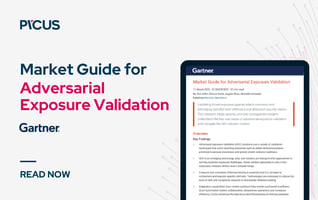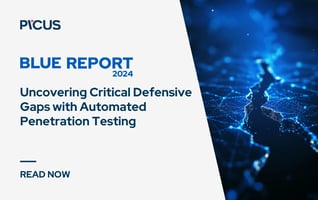Cyber Risk Management for CISOs: A Quick Overview
A Tough Job Gets Even Tougher: CISOs and Cyber Risk Management
Over the last several years, the CISO’s job has increasingly morphed into a more and more strategic role, one that’s responsible for not only protecting the organization’s data but, in essence, everything else as well: Business continuity, the enterprise’s greater cybersecurity posture, risk and vulnerability assessment, management, and reduction, protecting against bad actors and state-sponsored hacking collectives, safeguarding customer, employee, and partner data, and well, the list goes on.
Start with the Simple Stuff
When it comes to vulnerability management, context really is key. Why? Without the proper context, relying too heavily on an approach like the Common Vulnerability Scoring System (CVSS) can get your teams into trouble by filling them with a false sense of security. How? Leaning too heavily on the CVSS, for example, without accounting for your organization’s specific legal, regulatory, risk, vulnerability, and geographical details, can lead to over-prioritizing critical risks over less critical ones. However, depending on your systems, staff, configurations, and the tools you do and don’t have in place, those lower-level vulnerabilities may very well be easier for a savvy attacker to exploit in your real-world environment.
No News is Usually Good News
CISOs are a lot like air traffic controllers. They don’t tend to get much daily press, but when two planes collide or there’s a massive data breach, suddenly, they can expect to be front and center in the day’s headlines.
At Picus Security, we know all too well how hard it is being a modern CISO in today’s challenging regulatory, business, and cybersecurity environments. Which is why we’re here to educate you and your fellow CISOs about how to improve your Cyber Risk Management as part of your Continuous Threat Exposure Management (CTEM) approach. It’s a lot to chew on, along with everything else already on your plate, but we’ll show you how to focus on the threats and vulnerabilities that matter by helping you achieve smarter, simpler exposure assessment and exposure validation techniques.
To reach a broader audience, we’re going to keep this high-level. That said, you’re always welcome to reach out to us 24/7, and we’ll be happy to take a deep dive with you focusing on your organization’s specific needs to help you on your unique digital transformation and threat management journey.
But let’s not get too far ahead without making sure we’re all speaking the same language. Since both are relatively new terms in the larger cybersecurity conversation, let’s define our terms.
Exposure Assessment, Meet Your New BFF Exposure Validation
To facilitate a true CTEM approach, it’s important to perform both Exposure Assessment and Exposure Validation. Most CISOs will be familiar with Exposure Assessment – the process by which your teams identify assets and vulnerabilities within your environment so you can establish a baseline understanding of your attack surface.
And while Exposure Assessment is certainly necessary, it only gives you and your teams a partial view of your full risk profile. It’s important to fill in the rest of the picture with Exposure Validation.
Take a Peek Through an Attacker’s Lens
Exposure Validation involves further protocols that build on Exposure Assessment with insights viewed from a potential attacker’s perspective. This process looks at how difficult it would be to exploit the vulnerabilities that exist in your environment, what attack paths exist to your critical assets, how in/accessible they might be, and how effective your security controls and other measures are that you’ve already put in place. Exposure Validation allows you to focus specifically on criticality, the areas and gaps hiding in your environment that put your organization at the greatest and most immediate risk. Without this context, it’s far too easy for your teams to be overwhelmed by the noise and volume of far too many unprioritized vulnerabilities and not enough time – or staff – to triage them effectively.
The Latest Thinking on Quantifying and Mitigating Cyber Risks
This is not to say that a framework like the CVSS isn’t helpful. It is. However, it’s just one of many tools that you, as a responsible CISO, have at your disposal, along with exposure assessment and validation, your organization’s financial metrics, and the smart application of all relevant data to help you assess and prioritize your organization’s specific risk profile.
With more tools in your environment, a growing attack surface, and too many assets and data to effectively monitor, you don’t need us to tell you that your teams’ work isn’t getting any easier. Increasingly, manual human mitigation just can’t keep up with increasingly automated attackers and attack systems. Which is why the right validation strategy is increasingly important to modern security teams. The larger the attack surface, the more significant the number of vulnerabilities and misconfigurations; the greater the number of these exposures, the greater the risk that one or more of them might be successfully exploited to breach your organization’s defenses. With a functioning validation process in place, you and your teams will simply have fewer holes to plug and issues to address, as you’ll have easily prioritized and mitigated them already based on their potential impact on your organization’s security posture.
Sure. But How Do I Fund This Properly?
It’s one thing (yes, one difficult thing) to know what you need to do, and it’s another entirely to convince the board or your CFO and your C-suite to justify the right-sized level of investment to stay ahead of a constantly evolving threat landscape. Of course, everyone wants (ok, needs) a piece out of what is almost always a limited budget. Up against other departments and their respective cheerleaders for the funds you need, it’s important not to underestimate the potential costs of a significant breach to the company’s day-to-day business, in reputational and brand damage, fines and lawsuits, lost data, confidence, etc.
Trust: Hold on Tightly
This, of course, is where a well-informed board is critical to not only earmark the funds to grow the business and expand into new markets but also to protect the successes your organization has worked hard to achieve and the brand reputation that you’ve all built together. As Kevin Plank, the founder and (both former and current) CEO of Under Armour, says, “Trust is built in drops, but lost in buckets.” This is something no CISO wants to find out firsthand.
Next Steps
Talk to us about the Picus Security Validation Platform. It seamlessly weaves together Attack Surface Validation, Cloud Security Validation, Security Control Validation (including our groundbreaking Breach and Attack Simulation (BAS) product), Attack Path Validation, and Detection Rule Validation to give you the insights and intel you need to understand your total cybersecurity posture.
Don’t Stop Here
If you’d like more information, feel free to keep reading or request a free demo.








